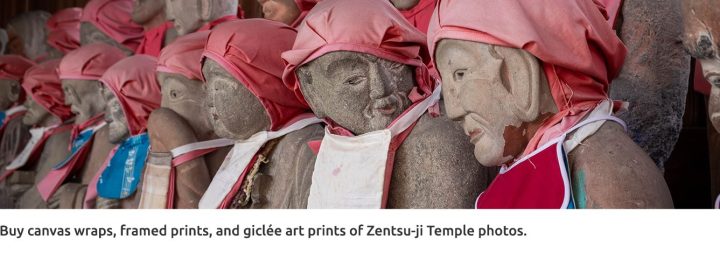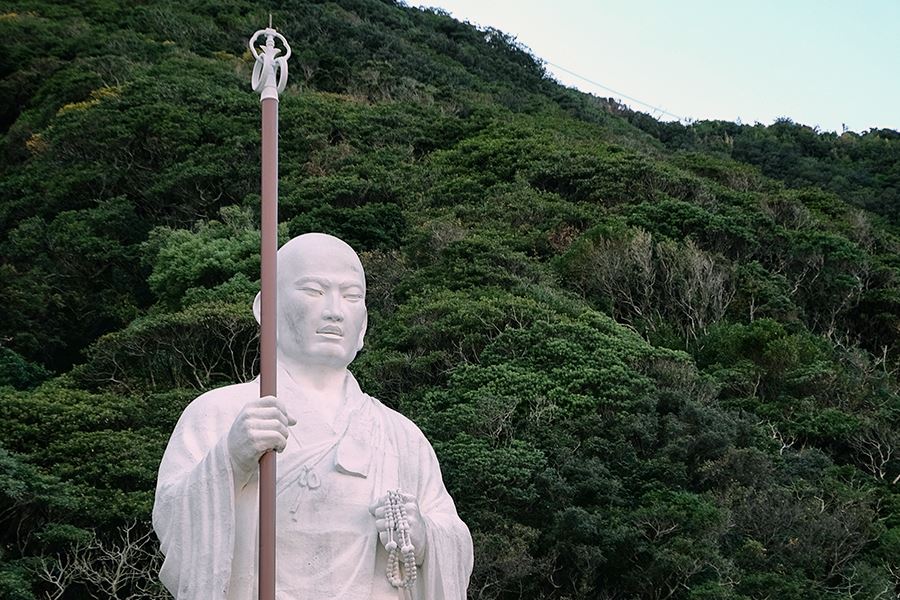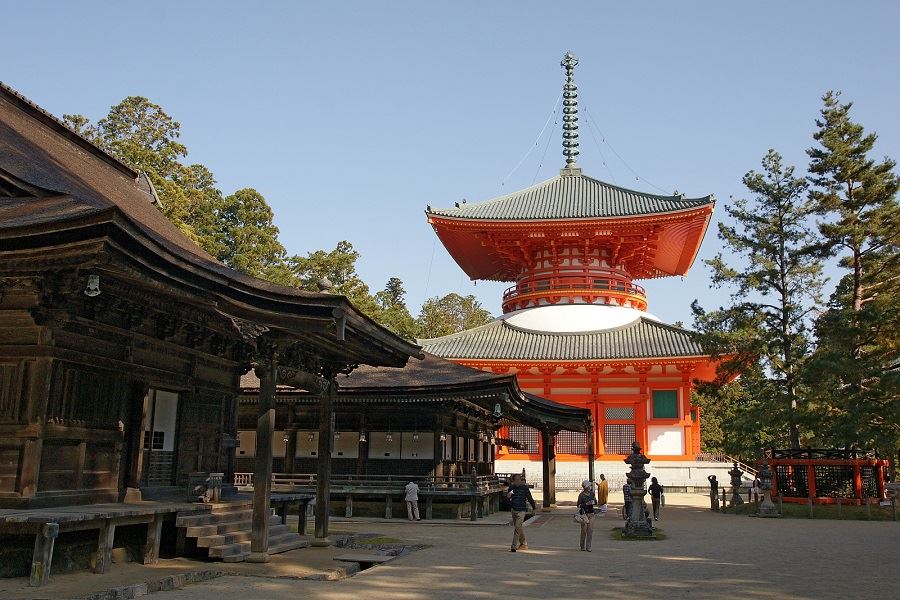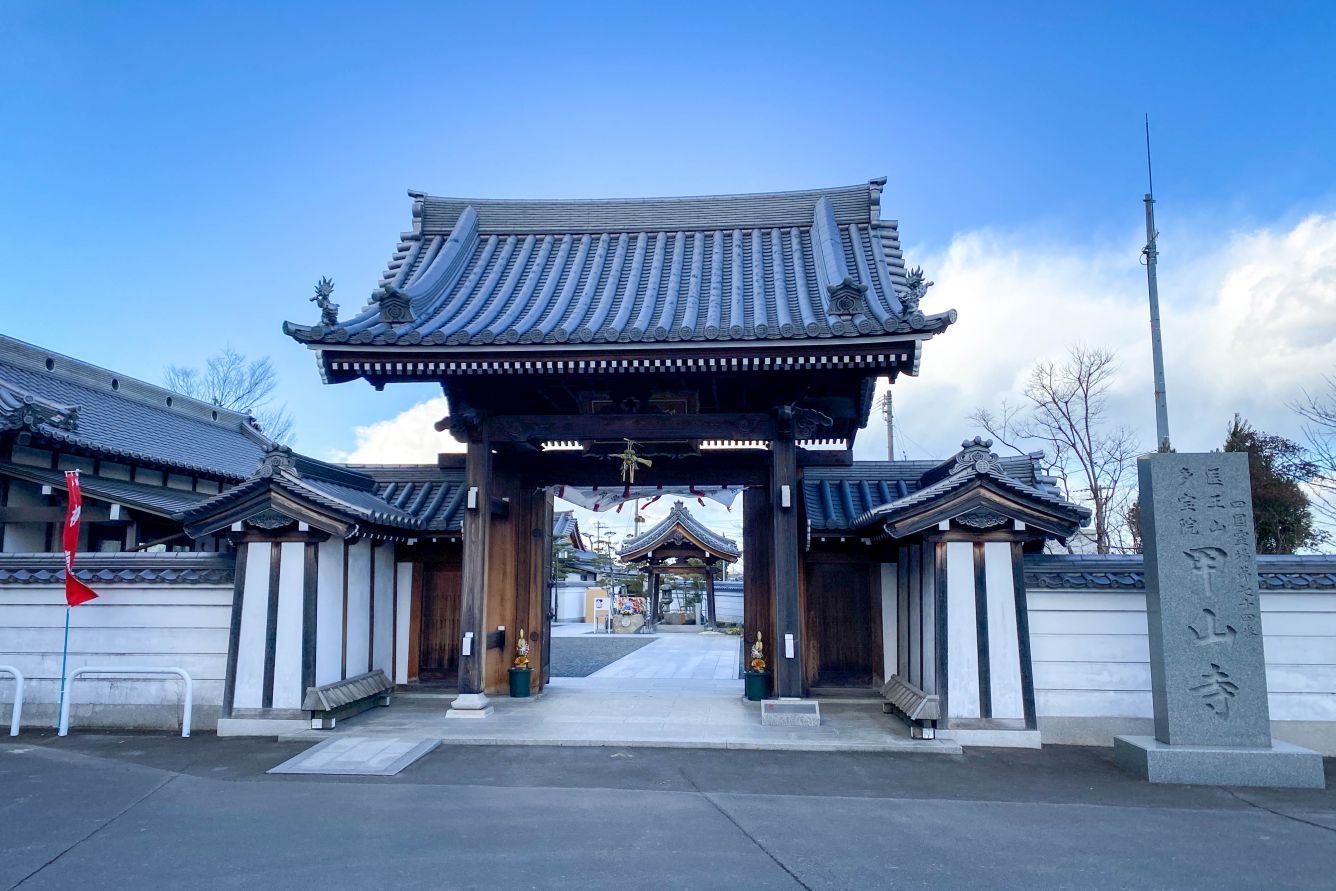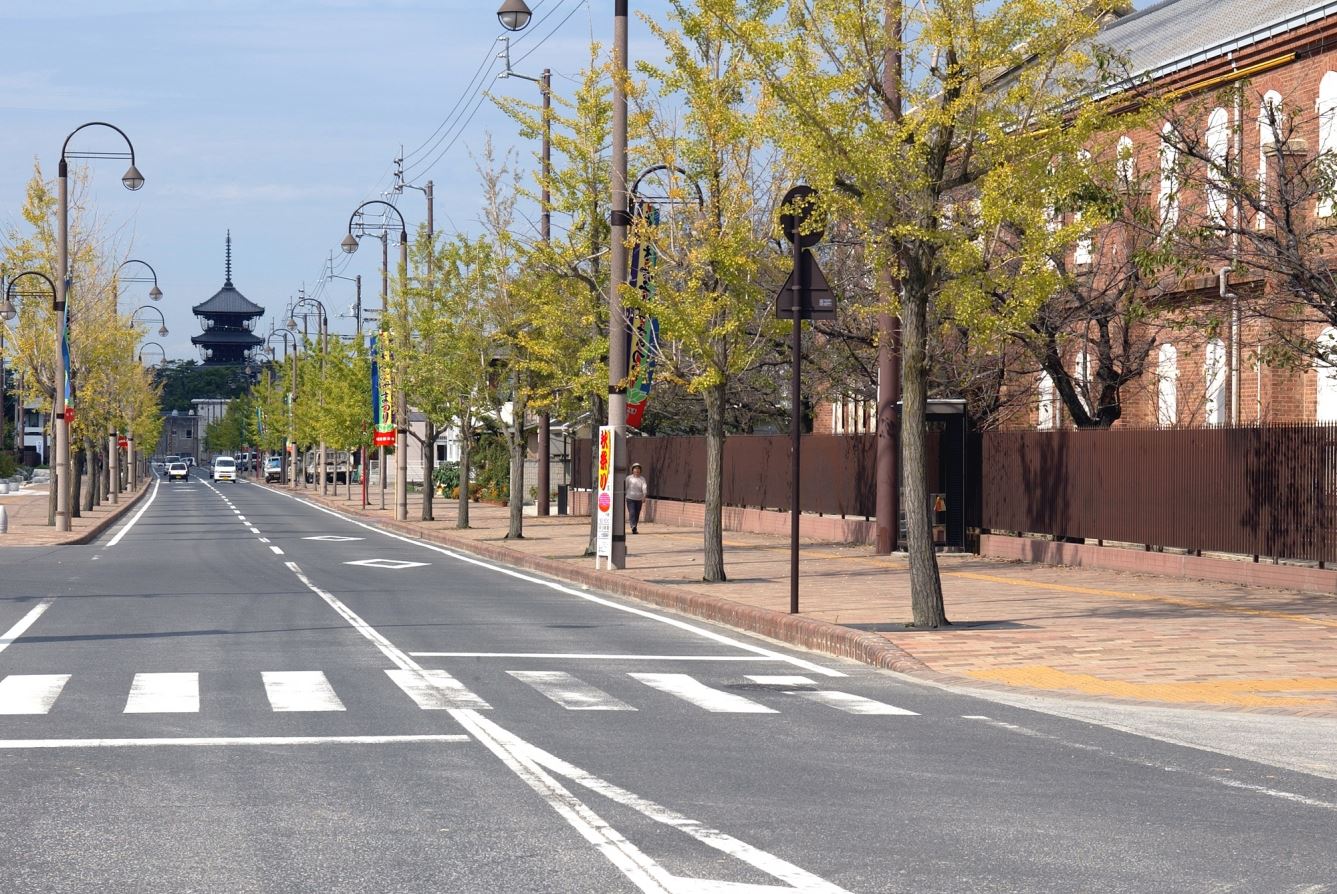Temple 75, Zentsū-ji
Home » Temple 75, Zentsū-ji
Temple 75, Zentsū-ji
Zentsū-ji is temple No. 75 on the Shikoku pilgrimage or Henro. The first Shingon temple in Japan, it’s renowned as the birthplace of Kūkai. It’s the largest temple complex in Shikoku with seven shrines and a pagoda. It’s counted as one of the three great sacred places related to Kūkai, along with Mt. Kōya in Wakayama and Tō-ji Temple in Kyōto.
What to see
The huge grounds are divided into the original site called the Tōin, or eastern temple, and the birthplace of Kūkai, called the Saiin, or western temple.
The southern main gate giving access to the eastern temple was rebuilt around 1908 to commemorate victory in the Russo-Japanese War. At the four corners of the roof are statues of the four heavenly kings, and from the left, there are two dragons, two human-faced birds, and a phoenix. When entering from this gate, the five-storied pagoda is on the right, and the main hall is in front of you. The main hall was rebuilt in 1699. You can enter the hall and go around the principal image of Yakushi Nyorai to the back to see it up close. The five-storey pagoda was first built in 813 and was rebuilt four times, the current pagoda being completed in 1902. It stands 43 m from the foundation to the top of the finial. During the consecutive holidays in May every year, you can enter up to the 2nd floor.
Copies of stone Buddha statues of the Saigoku, Bando, and Chichibu sacred sites have been placed around the eastern temple in modern times, along with stone statues of 500 Arhats, people who have achieved a high degree of Buddhist enlightenment.
The Shaka Hall was rebuilt from 1673. You can see a sitting statue of Shaka Nyorai made in the Edo period. The skirted belfry was rebuilt at the end of the Edo period. The hexagonal building is a sutra repository.
If you go straight to the left in front of the main hall, you leave the eastern temple at the inner gate and pass between the compounds, coming to the western temple. The Hatsuka Bridge takes its name from the fact that it was only possible to cross it on the 20th of every month. After crossing the Hatsuka Bridge, you pass through a Niō Gate which was rebuilt in 1889. The Niō statues date from 1370. A corridor leads to the Daishi Hall. The corridor was built in 1915. There are sculptures of the 12 zodiac animals and phoenixes, and 17 paintings depicting the life of Kūkai.
At the end of the corridor is the Daishi Hall. The temple office is located to the right just after passing through the Niō Gate. The Goeidō or Daishi Hall was built in 1831, and renovated in 1937. It’s said to be the birthplace of Kūkai. In the inner hall is the principle image, the Meshun Daishi. In front of it is a wooden statue of Kūkai, and in the hall there are four heavenly king statues, a statue of the infant Kūkai, and Kūkai’s mother and father. From here, stairs lead down to the Kaidan Meguri, which involves passing through a pitch-dark tunnel where statues of Dainichi Nyorai, the infant Kūkai, and his parents are enshrined. A taped message meant to be Kūkai welcomes you to his birthplace and encourages you to contemplate your true nature. The Ubuyu no Ido is the well from which Kūkai’s first bath was drawn. Access to the Treasure Hall is included in the Kaidan Meguri and Ubuyu no Ido visit. The Treasure Hall was built in 1973.
Zentsū-j has many treasures, particularly relics of Kūkai. The treasure hall holds the staff of gold and copper which he received as the eighth patriarch of the Shingon sect from the seventh patriarch, Keika, who he studied with in China.
History
Kūkai was from Zentsū-ji in Sanuki Province. According to records, the temple was given land by Saeki no Tagimi, Kūkai’s father and a local lord. His given name was Yoshimichi, which can also be read as Zentsū. Construction of the temple started in 807, and it was completed in 813. It is said that it was built in imitation of Qinglong Temple in Chang’an. Eka, who was Kūkai’s teacher in China, lived at this temple. The new temple was named after Kūkai’s father.
Zentsū-ji is first mentioned in writing in 1018. It’s described as a branch temple of Tō-ji Temple, and is said to have been built by Kūkai’s ancestors. Old roof tiles dating back to the Hakuhō and Nara periods have been excavated from the precincts, and it’s thought that Zentsū-ji was built as a temple of the Saeki clan.
It wasn’t until the Kamakura period that the emperor and the retired emperor conferred patronage and land on the temple, leading to its prosperity. Behind this protection is the belief in Kōbō Daishi, which spread in the latter half of the Heian period. The Mehiki Daishi was kept at his birthplace and was revered by the aristocracy. It’s said to be a self-portrait that Kūkai made for his mother before he set off for China. The birthplace of Kūkai, called the Saiin was built in 1249, and the current form of eastern and western compounds was completed. During the Kamakura period, the parent temple of Zentsū-ji changed frequently, but after the Muromachi period, it managed its own affairs under the patronage of the Ashikaga clan. From 1331, the priest Yūhan lived at the temple. He rebuilt the five-storey pagoda and other buildings, and became the first head priest of the western temple.
In 1558, the eastern temple was burned down by Miyoshi Yoshikata of Tokushima, but in 1588, the Ikoma clan of Takamatsu donated rice-bearing land, enabling the temple to rebuild. In the early modern period, it prospered under the patronage of the Matsudaira family of Takamatsu and the Kyōgoku family of Marugame. In the Meiji period, an army base was set up nearby and Zentsūji developed as a military city. Until the Edo period, the current eastern and western temples were separate temples, but in the first year of the Meiji period, they became a single temple. In 1941, the temple was promoted to the head temple of the Shingon sect Zentsū-ji school.
The temple holds tens of thousands of documents and records that were left untouched for a long time. However, since 2000, the local Kagawa Prefectural Museum has been conducting surveys and listings as a commemorative project for the 1,200th anniversary of its founding, and survey reports have been published.
Legends
There are no particular legends associated with Zentsū-ji. Being the birthplace of Kūkai is probably sufficient.
Information
Name in Japanese: 善通寺
Pronunciation: zentsū-ji
Address: 3-3-1 Zentsujicho, Zentsuji, Kagawa 765-0004
Related Tours

Experience the most beautiful and interesting temples of the Shikoku Pilgrimage in seven days.

A tour for families or friends, staying in the most characterful kominka and ryokan of Shikoku.

Visit the most beautiful and interesting temples of the Shikoku Pilgrimage and walk the toughest trails.
